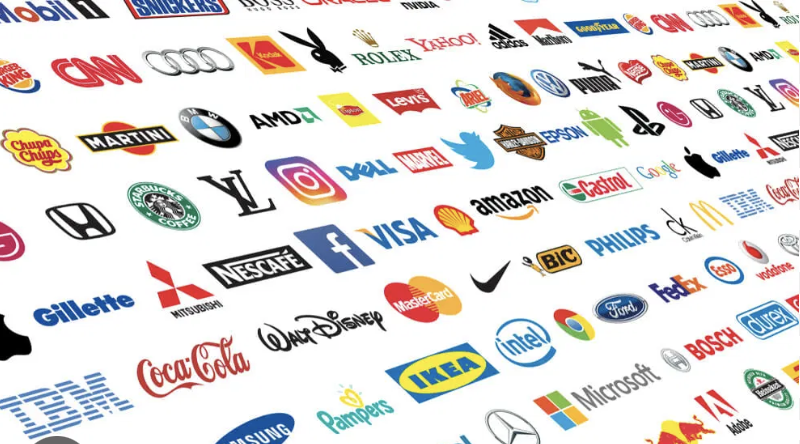As a designer, one of the most crucial decisions you’ll make is choosing the perfect image format for your logos. But before we delve into the world of file formats, it’s essential to understand the significance of typography in logo design. Typography is the art and technique of arranging type to make written language legible, readable, and visually appealing. It plays a fundamental role in creating a distinctive and memorable brand identity. Whether you’re designing a logo for a new startup or rebranding an established company, the font you choose can make all the difference.

Choosing the Perfect Image Format for Logos
Contents
Types of Fonts and Their Characteristics
Fonts can be broadly categorized into four main types: serif, sans-serif, script, and display. Each type has its own unique characteristics and conveys a different mood or message. Serif fonts, such as Times New Roman, have small decorative lines or strokes at the ends of characters, giving them a classic and elegant look. Sans-serif fonts, like Arial or Helvetica, have clean and simple lines without any decorative strokes. They are often associated with modernity and minimalism. Script fonts mimic cursive or handwritten styles and evoke a sense of elegance and sophistication. Display fonts, on the other hand, are highly decorative and attention-grabbing, perfect for making a bold statement.
The choice of font will largely depend on the brand’s personality, target audience, and the message it wants to convey. For example, a law firm might opt for a classic serif font to instill trust and professionalism, while a trendy fashion brand might choose a playful script font to reflect its youthful and creative nature. It’s essential to consider these factors when selecting a font for your logo design.
The Role of Fonts in Design
Fonts play a vital role in design beyond just conveying a brand message. They have the power to elicit emotions, establish hierarchy, and enhance readability. The right font can evoke a sense of trust, elegance, or excitement, while the wrong one can create confusion or send the wrong message. Moreover, fonts can establish a visual hierarchy by differentiating between headings, subheadings, and body text. By varying the font size, weight, and style, designers can guide the viewer’s attention and make the content more scannable.
In logo design, fonts are often paired with symbols or illustrations to create a unique and cohesive visual identity. The choice of font should complement the accompanying elements and create a harmonious composition. For example, a bold and modern sans-serif font might be paired with a simple geometric symbol, while a delicate script font could be combined with an intricate floral illustration. The overall goal is to create a logo that is visually appealing, memorable, and effectively communicates the brand’s values and personality.
The Psychology of Fonts
Fonts have a psychological impact on the viewer and can influence their perception of a brand. Different fonts evoke different emotions and associations. For example, serif fonts are often associated with tradition, trustworthiness, and authority, making them ideal for law firms or financial institutions. Sans-serif fonts, with their clean and modern appearance, can convey a sense of simplicity, efficiency, and innovation, making them popular in the tech industry. Script fonts, on the other hand, can evoke feelings of elegance, femininity, or creativity, making them suitable for beauty or fashion brands.
It’s essential to consider the target audience and the message the brand wants to convey when selecting a font. Research has shown that certain fonts are more appealing to specific demographic groups. For example, rounded and curvy fonts are generally preferred by younger audiences, while more conservative and traditional fonts are favored by older demographics. By understanding the psychology behind fonts, designers can make informed decisions that resonate with their intended audience.
Typography Trends in Modern Design
Typography, like any other design element, is subject to trends and evolving styles. Keeping up with the latest typography trends can help designers create contemporary and visually appealing logos. Currently, minimalism and simplicity are dominant trends in typography. Clean, sans-serif fonts with ample white space are popular choices for modern logos. These fonts convey a sense of elegance, professionalism, and simplicity. Another prevalent trend is the use of custom or hand-drawn fonts, which add a unique and personal touch to the logo design. These fonts can help a brand stand out and create a strong visual identity.
Color gradients and layering effects are also gaining popularity in typography design. These techniques add depth and dimension to the text, making it visually engaging and dynamic. Additionally, designers are exploring unconventional layouts and experimenting with typography as a graphic element. By manipulating letterforms, spacing, and alignment, designers can create logos that are not only readable but also visually captivating.
Tips for Choosing the Right Font
Choosing the right font for your logo can be a daunting task, but with a few tips, you can make an informed decision. First and foremost, consider the brand’s personality and the message it wants to convey. Research the industry and the target audience to understand the expectations and preferences. Experiment with different font types and styles to find the one that best aligns with the brand’s values.
Another crucial aspect to consider is scalability. A logo should be versatile and easily recognizable at different sizes and on various platforms. Test the font at different sizes and ensure that it remains legible and visually appealing. Additionally, pay attention to the font’s readability, especially when it comes to long brand names or taglines. The font should be clear and easy to read, both in small sizes and when used in large-scale applications.
Lastly, consider the longevity of the font. Will it still be relevant and visually appealing in the years to come? Avoid using fonts that are overly trendy or too niche, as they may quickly become outdated. Opt for classic and timeless fonts that will stand the test of time and maintain their appeal.
Using Fonts Effectively in Different Design Mediums
Typography in logo design is not limited to just the font choice; it also involves effective implementation across different design mediums. Whether it’s print, digital, or physical applications, the font should remain consistent and retain its impact. When designing a logo, consider how it will be used across various platforms, such as business cards, websites, social media, or signage.
For print applications, ensure that the font is legible when printed in small sizes or on different materials. Consider the color contrast between the font and the background to ensure optimal readability. In digital applications, such as websites or social media, the font should be web-safe and easily readable on screens of various sizes. Additionally, consider the loading time of web fonts and opt for lightweight options to maintain a smooth user experience.
In physical applications, such as signage or product packaging, the font should be easily readable from a distance. Pay attention to factors like spacing, kerning, and letterforms to ensure maximum impact and legibility. By considering the specific requirements of each medium, designers can create a consistent and impactful brand presence.
Famous Fonts and Their Impact on Popular Culture
Certain fonts have become iconic and synonymous with popular culture. They have transcended their original purpose and become instantly recognizable symbols. One such example is the “Helvetica” font, known for its clean and modern appearance. Helvetica has been widely adopted in various industries and has become a symbol of modernity and simplicity. It has been used by brands such as Apple, American Apparel, and BMW, among others. The font’s neutrality and versatility have made it a timeless choice for logo design.
Another famous font is “Gotham,” adopted by the Obama 2008 presidential campaign. Gotham’s geometric shapes and clean lines conveyed a sense of hope, change, and modernity. The font became synonymous with the campaign and was widely recognized. Other famous fonts include “Coca-Cola’s Spencerian Script,” “Disney’s Waltograph,” and “Nike’s Futura Bold,” each representing iconic brands and leaving a lasting impact on popular culture.
Conclusion
Choosing the perfect image format for logos is a critical decision in logo design, but it’s equally important to select the right typography font. Fonts play a crucial role in establishing a brand’s identity, conveying its personality, and creating a memorable impression. By understanding the different types of fonts, their characteristics, and the psychology behind them, designers can make informed decisions that resonate with their target audience.
Moreover, staying updated with typography trends and considering factors such as scalability, readability, and longevity can help designers create contemporary and visually appealing logos. Additionally, implementing fonts effectively across different design mediums ensures consistency and impact. By considering famous fonts and their impact on popular culture, designers can draw inspiration and create logos that leave a lasting impression.
In the end, choosing the perfect typography font is a blend of art, science, and intuition. It requires a deep understanding of the brand, its values, and its target audience. By putting thought and care into font selection, designers can create logos that are visually striking, memorable, and effectively communicate the brand’s message. So, the next time you embark on a logo design journey, remember the power of typography and choose wisely.
